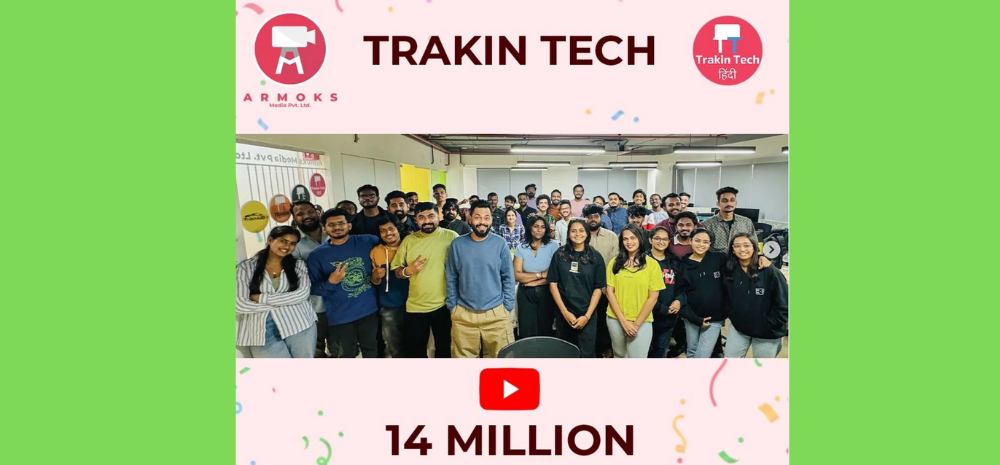This is a Guest Blog by Mr. Akhil Zeeb, Co-founder & Chief Product Officer, Cavli Wireless
India, with its burgeoning economy and a strong manufacturing sector, has set ambitious goals through initiatives like Make in India launched by the Indian government, which aims to transform the country into a global manufacturing hub. However, in the quest for manufacturing excellence, the adoption of cutting-edge technologies is paramount.

One such transformative technology is the Internet of Things (IoT). With a valuation of USD 202 billion recorded in 2022, the worldwide IoT in the manufacturing sector is projected to reach a staggering USD 1829.1 billion by the year 2032. While IoT offers numerous advantages, it’s equally important to address the challenges faced by manufacturers in India in adopting this technology.
The Evolution of IoT in Manufacturing
The evolution of IoT (Internet of Things) in the manufacturing sector is a journey marked by significant milestones. It begins with its historical roots in the early 20th century when rudimentary machine-to-machine communication laid the foundation for basic automation systems. In the 1970s, the advent of programmable logic controllers (PLCs) marked a pivotal moment, as these devices integrated sensors and actuators with machinery, setting the stage for the modern IoT landscape.
As the late 20th century unfolded, advancements in computing, particularly the rise of cloud computing and big data analytics, further propelled IoT’s growth in manufacturing. These technologies enabled real-time data collection, analysis, and data-driven decision-making, revolutionising the way factories operated.
In the present day, the manufacturing sector has entered the era of IoT, wherein concepts such as predictive maintenance, digital twins, and smart factories play a transformative role in reshaping the industry landscape. Within this context, the Industrial Internet of Things (IIoT) emerges as a key driver, harnessing capabilities like remote monitoring, predictive analytics, and intelligent automation to streamline production processes, minimize downtime, elevate product quality, and cultivate a culture of innovation within manufacturing facilities.
IoT Contribution to Make in India
The Internet of Things (IoT) is making significant contributions to the Make in India initiative across various dimensions. One of its primary advantages is the enhancement of operational efficiency. IoT-enabled sensors and devices play a crucial role in gathering real-time data on equipment performance. This data empowers manufacturers to make informed decisions, optimize their production processes, reduce downtime, and ultimately improve overall efficiency. These efficiency gains translate into increased productivity and heightened competitiveness on a global scale, which are key objectives of the “Make in India” campaign.
IoT also supports the initiative through predictive maintenance. By analysing the real-time data collected, manufacturers can proactively identify potential issues in their equipment before they escalate into costly breakdowns. This approach not only conserves valuable resources but also ensures that manufacturing facilities consistently operate at peak performance. This aligns perfectly with the “Make in India” initiative’s focus on achieving operational efficiency and reliability in manufacturing processes.
IoT contributes significantly to quality control within the manufacturing sector. The data collected by IoT devices allows manufacturers to monitor every step of the production process in real time. This enables the immediate detection of defects or variations, ensuring that higher-quality products are consistently produced. This commitment to quality strengthens India’s reputation as a dependable manufacturing destination, further promoting the goals of the “Make in India” initiative.
Beyond the factory floor, IoT’s impact extends to supply chain management, an area critical to the success of Make in India. Real-time tracking and monitoring of assets, inventory, and shipments enhance visibility and efficiency throughout the supply chain. A well-optimized supply chain is imperative for the initiative’s success, and IoT offers the tools needed to achieve this goal.
Furthermore, IoT fosters transparency by providing visibility into the entire manufacturing ecosystem, promoting better collaboration and coordination among stakeholders, including manufacturers, suppliers, and regulatory bodies. As India strengthens its manufacturing sector, this heightened transparency becomes a catalyst for building trust and attracting foreign investment, essential components of the “Make in India” campaign’s objectives. Additionally, IoT introduces innovative business models like “connectivity-as-a-service,” aligning with the initiative’s focus on economic growth by enhancing customer satisfaction and establishing recurring revenue streams.
The Challenges Faced by Manufacturers
Implementing IoT in manufacturing presents both opportunities and challenges. One significant challenge is the high initial investment costs involved. Manufacturers must allocate resources for sensors, connectivity infrastructure, data analytics tools, and more, which can be financially burdensome for many small and medium-sized enterprises (SMEs). Additionally, there’s a need for a skilled workforce proficient in data analytics, sensor technology, and cybersecurity, an area where India faces a talent shortage despite its vast pool of professionals.
Furthermore, cybersecurity concerns loom large as the interconnected nature of IoT devices increases vulnerability to cyberattacks, potentially leading to data breaches, operational disruptions, and financial losses. Additionally, in certain regions, particularly rural areas, there are infrastructure limitations, including challenges related to internet connectivity and power supply reliability. Given that IoT devices heavily rely on a stable internet connection and power source, addressing these limitations is crucial for widespread IoT adoption in India’s manufacturing sector.
Initiatives to Overcome Challenges
Efforts to bridge the skills gap and promote IoT adoption in India’s manufacturing sector are gaining momentum through several strategies. The Ministry of Electronics and IT (MeitY) in India is investing $10 billion in the India Semiconductor Mission (ISM) to boost semiconductor R&D. This move underscores the government’s commitment to enter the semiconductor market. The investment covers capital, manufacturing incentives, and the Design Linked Incentive (DLI) scheme, supporting Fabless startups in creating products for both domestic and global markets.
The Indian government recognises the semiconductor industry’s importance and has enacted various policies. The ‘Make in India’ initiative, launched in 2014, aims to promote manufacturing and position India as a global manufacturing hub. Initiatives like the Production Linked Incentive (PLI) scheme offer a substantial $1.7 billion incentive for semiconductor manufacturing facilities, creating opportunities for jobs and growth. Additionally, the government has introduced schemes like the Design Linked Incentive (DLI), Chips to Startup (C2S), and Scheme for Promotion of Electronic Components and Semiconductors (SPECS) to support the industry.
To address the global chip shortage, the government launched the Semicon India program to encourage manufacturers to establish semiconductor industry setups. To ensure a skilled workforce, curriculum changes by the All India Council for Technical Education (AICTE) and industry involvement are pivotal in nurturing semiconductor talent.
Moreover, public-private partnerships like Micron Technology, a global chip manufacturing giant, have unveiled a substantial investment plan specifically for India. This signifies India’s emerging significance as a driving force behind IoT adoption. Collaborations foster investments in IoT infrastructure, research, and development, creating an environment conducive to innovation.
The way forward
India’s ambitious “Make in India” initiative aims to position the country as a global manufacturing hub, but achieving manufacturing excellence requires embracing cutting-edge technologies like the Internet of Things (IoT). With the global IoT in the manufacturing sector set to reach a staggering $1.52 trillion by 2032, IoT is pivotal in enhancing operational efficiency, predictive maintenance, quality control, and supply chain optimisation. However, India faces challenges like high initial costs, a shortage of skilled professionals, cybersecurity concerns, and infrastructure limitations. To overcome these obstacles, the government and private sector are investing in training programs, infrastructure development, and fostering public-private partnerships, emphasising IoT’s transformative potential in revolutionising India’s manufacturing landscape.

















